-
 Bitcoin
Bitcoin $106,437.2012
0.82% -
 Ethereum
Ethereum $2,442.5287
0.82% -
 Tether USDt
Tether USDt $1.0005
-0.02% -
 XRP
XRP $2.1812
-0.27% -
 BNB
BNB $645.1327
0.45% -
 Solana
Solana $146.2379
0.39% -
 USDC
USDC $0.9999
-0.01% -
 TRON
TRON $0.2751
0.92% -
 Dogecoin
Dogecoin $0.1662
-0.23% -
 Cardano
Cardano $0.5827
-1.22% -
 Hyperliquid
Hyperliquid $37.5225
0.04% -
 Bitcoin Cash
Bitcoin Cash $479.0877
4.02% -
 Sui
Sui $2.7846
-3.27% -
 Chainlink
Chainlink $13.3576
0.84% -
 UNUS SED LEO
UNUS SED LEO $9.0252
-1.20% -
 Stellar
Stellar $0.2455
-1.07% -
 Avalanche
Avalanche $18.0680
-1.81% -
 Toncoin
Toncoin $2.8948
-1.07% -
 Shiba Inu
Shiba Inu $0.0...01164
-1.65% -
 Litecoin
Litecoin $85.0637
-0.06% -
 Hedera
Hedera $0.1526
-0.89% -
 Monero
Monero $316.2941
0.78% -
 Ethena USDe
Ethena USDe $1.0003
-0.04% -
 Polkadot
Polkadot $3.4113
-1.87% -
 Dai
Dai $1.0000
-0.01% -
 Bitget Token
Bitget Token $4.4488
5.16% -
 Uniswap
Uniswap $7.1740
3.09% -
 Pi
Pi $0.5968
11.43% -
 Pepe
Pepe $0.0...01010
-0.65% -
 Aave
Aave $264.3189
0.40%
Can the EMV cross the zero axis confirm the rise?
EMV crosses above zero signal bullish momentum in crypto, but confirmation with volume and other indicators is key to avoid false signals.
Jun 25, 2025 at 11:14 am
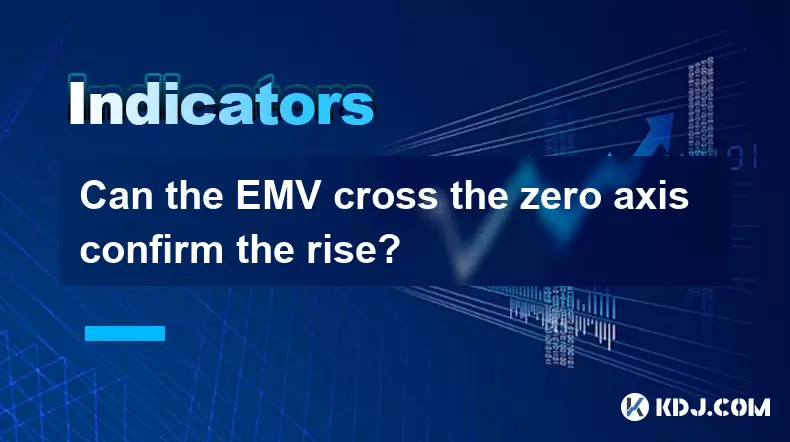
Understanding the EMV Indicator in Cryptocurrency Trading
The Ease of Movement Value (EMV) is a technical analysis indicator commonly used by traders to assess the relationship between price and volume. In the cryptocurrency market, where volatility is high and trends can reverse quickly, understanding how to interpret EMV becomes crucial for making informed decisions. The EMV helps identify whether prices are rising or falling with ease based on volume, which can be particularly insightful during consolidation phases or breakouts.
EMV calculates the ratio of price change to volume. When volume supports price movement effectively, EMV rises; conversely, if volume doesn't support the move, EMV declines. This makes EMV an effective tool for confirming momentum behind price action, especially when observing potential trend reversals.
What Does It Mean When EMV Crosses the Zero Axis?
When the EMV crosses above or below the zero axis, it signals a shift in the balance between buying and selling pressure. A cross above zero indicates that positive price movement is being supported by sufficient volume, suggesting bullish momentum. Conversely, a cross below zero implies bearish sentiment, as declining prices are accompanied by increased volume.
Crossing the zero line acts as a confirmation signal rather than a predictive one. Traders often use this crossover in conjunction with other indicators to avoid false signals, especially in volatile crypto markets where sudden spikes and dips are common.
Can a Zero Axis Cross Confirm a Bullish Trend?
In theory, yes — a rise in EMV above zero may indicate that bulls are gaining control. However, in practice, relying solely on this signal can lead to premature entries or missed opportunities. For instance, during a sharp upward spike driven by news or hype, EMV might surge above zero but fail to sustain due to lack of follow-through volume.
- Observe volume patterns after the cross: Is volume increasing alongside the price rise? If so, the trend has more credibility.
- Check for divergence: If EMV rises while price stagnates, it could indicate weakening momentum.
- Use alongside moving averages: Filtering EMV signals through its own moving average (like a 9-period EMA) can help confirm strength.
Practical Steps to Analyze EMV Behavior Around Zero
To effectively analyze whether an EMV cross above zero confirms a bullish move, traders should follow a structured approach:
- Step 1: Identify the current trend context. Is the asset in a downtrend, sideways phase, or already in an uptrend? A zero cross following a downtrend carries more weight than one occurring mid-uptrend.
- Step 2: Observe candlestick structure around the cross. Are there strong green candles forming as EMV moves above zero? Look for engulfing patterns or bullish reversals.
- Step 3: Validate with volume bars. Ensure that volume is rising along with EMV and price movement. Flat or decreasing volume weakens the signal.
- Step 4: Set entry points cautiously. Don’t enter immediately upon crossing zero. Wait for confirmation from price action or another oscillator like RSI or MACD.
- Step 5: Place stop-loss orders accordingly. Since EMV can whipsaw in choppy markets, set stops just below key support levels to manage risk.
Common Misinterpretations of EMV Crossovers
Traders often misread EMV crossovers as definitive buy or sell signals without considering broader market dynamics. One major pitfall is ignoring divergences between EMV and price. For example, if the price makes new highs but EMV fails to do so, this bearish divergence suggests weakening buying pressure.
Another mistake is using EMV in isolation. While useful, it lacks predictive power on its own. Combining it with tools like Bollinger Bands, Fibonacci retracements, or Ichimoku Clouds can provide a more comprehensive view of the market.
Overreliance on EMV without filtering noise from fake volume spikes can lead to poor trading decisions. Especially in altcoins with low liquidity, sudden whale movements can distort both price and volume readings, creating misleading EMV signals.
Frequently Asked Questions
Q: Can EMV be used for short-term trading strategies in crypto?
Yes, EMV can be applied to shorter timeframes such as 15-minute or hourly charts. However, due to increased volatility in these intervals, it's essential to combine it with volatility filters or other momentum indicators to reduce false signals.
Q: How does EMV differ from On-Balance Volume (OBV)?
While both measure volume-based momentum, EMV incorporates price range and volume together, whereas OBV only adds or subtracts volume based on whether the price closed higher or lower. EMV provides a smoother reading by normalizing volume relative to price movement.
Q: What settings are best for EMV in cryptocurrency trading?
A common default is a 14-period setting, but many traders adjust it to 9 or 12 depending on their strategy. Shorter periods make EMV more sensitive, suitable for scalping, while longer periods offer fewer but more reliable signals for swing trading.
Q: Is EMV reliable for predicting tops or bottoms in crypto cycles?
No, EMV is not designed to predict turning points. It is a confirming indicator rather than a forecasting one. To anticipate tops or bottoms, traders should look at leading indicators such as RSI overbought/oversold levels or Fibonacci extensions in combination with EMV.
Disclaimer:info@kdj.com
The information provided is not trading advice. kdj.com does not assume any responsibility for any investments made based on the information provided in this article. Cryptocurrencies are highly volatile and it is highly recommended that you invest with caution after thorough research!
If you believe that the content used on this website infringes your copyright, please contact us immediately (info@kdj.com) and we will delete it promptly.
- Dogecoin's Crossroads: Buy Signal or Risky Business?
- 2025-06-25 18:25:12
- Pi Network Price Prediction: Navigating the Coin's Breakout and Potential Drop
- 2025-06-25 18:25:12
- Green Minerals, Panther Metals, and the Bitcoin Buy-In: A New Era for Mining?
- 2025-06-25 18:35:13
- Shiba Inu, Dogecoin, and Meme Coins: What's the Hype in 2025?
- 2025-06-25 16:25:12
- JasmyCoin's Wild Ride: 6x Setup or Just a Mirage?
- 2025-06-25 16:25:12
- Mastercard's Stablecoin Integration: Revolutionizing On-Chain Commerce, NY Style
- 2025-06-25 16:45:12
Related knowledge
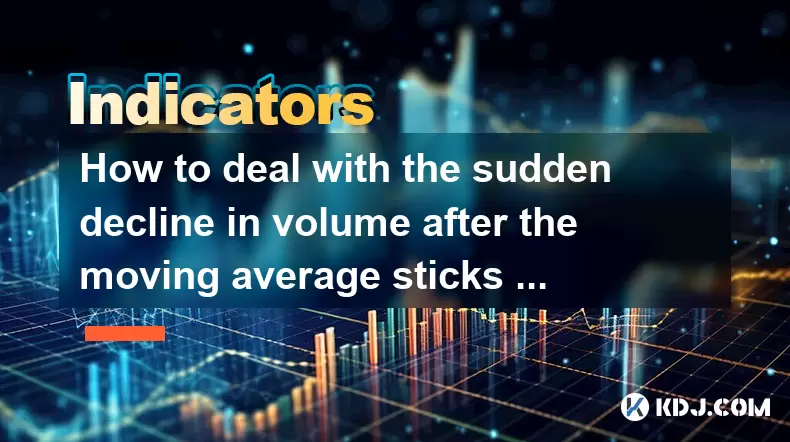
How to deal with the sudden decline in volume after the moving average sticks together?
Jun 25,2025 at 06:35pm
Understanding the Moving Average Convergence and Its ImplicationsIn the world of cryptocurrency trading, moving averages (MAs) are essential tools used to identify trends and potential reversals. When multiple moving averages converge or 'stick together,' it often indicates a period of consolidation or indecision in the market. This phenomenon can be ob...
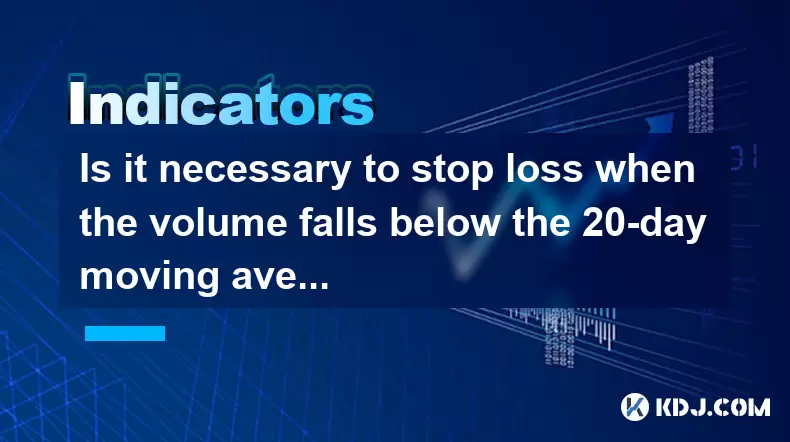
Is it necessary to stop loss when the volume falls below the 20-day moving average?
Jun 25,2025 at 05:00pm
Understanding the 20-Day Moving Average in Cryptocurrency TradingIn cryptocurrency trading, technical analysis plays a pivotal role in decision-making. One of the most commonly used indicators is the 20-day moving average (MA). This metric calculates the average price of an asset over the past 20 days and helps traders identify trends and potential reve...
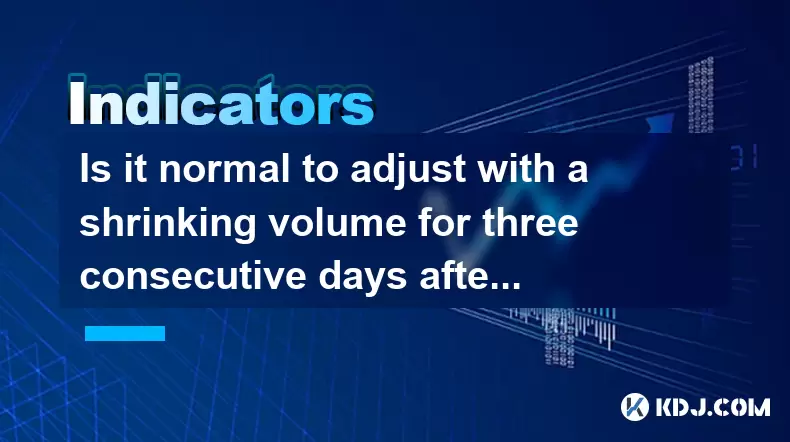
Is it normal to adjust with a shrinking volume for three consecutive days after breaking through the previous high with a large volume?
Jun 25,2025 at 03:49pm
Understanding Volume and Price Relationship in Cryptocurrency TradingIn cryptocurrency markets, volume is a critical metric that reflects the number of assets traded over a specific period. When a cryptocurrency breaks through a previous high with large volume, it typically signals strong buying pressure and market confidence. However, it's not uncommon...
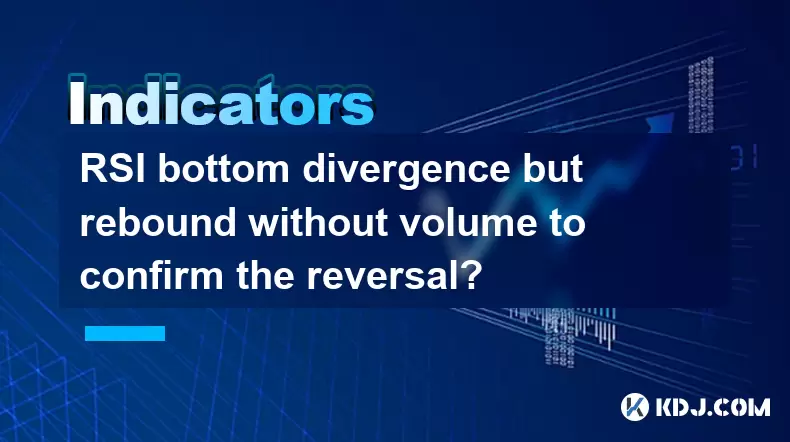
RSI bottom divergence but rebound without volume to confirm the reversal?
Jun 25,2025 at 04:42pm
Understanding RSI Bottom DivergenceRelative Strength Index (RSI) is a momentum oscillator used in technical analysis to measure the speed and change of price movements. RSI bottom divergence occurs when the price of an asset makes a new low, but the RSI does not confirm that low and instead forms a higher low. This pattern suggests weakening downward mo...
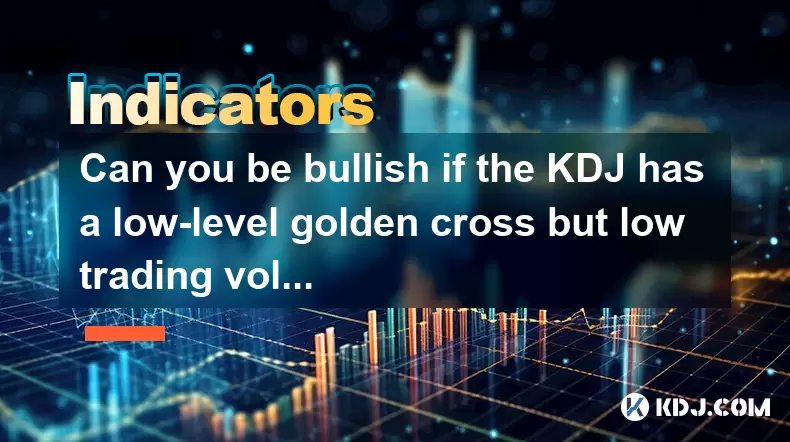
Can you be bullish if the KDJ has a low-level golden cross but low trading volume?
Jun 25,2025 at 03:14pm
Understanding the KDJ Indicator in Cryptocurrency TradingThe KDJ indicator, also known as the stochastic oscillator, is a momentum-based technical analysis tool widely used in cryptocurrency trading. It comprises three lines: the %K line (fast stochastic), the %D line (slow stochastic), and the J line (divergence value). These lines oscillate between 0 ...
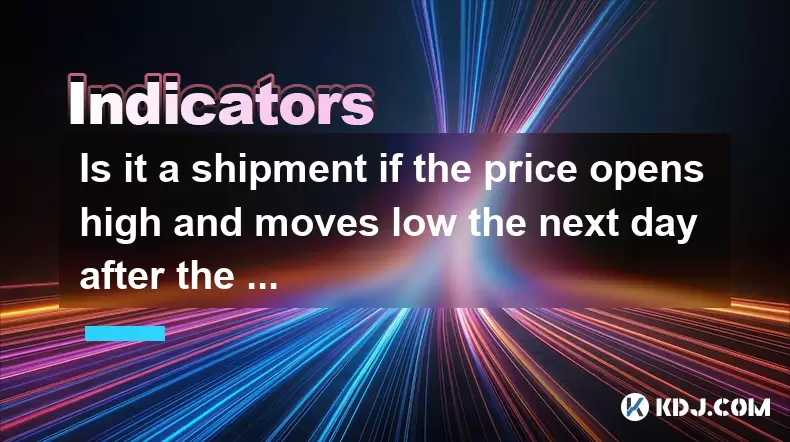
Is it a shipment if the price opens high and moves low the next day after the daily limit with huge volume?
Jun 25,2025 at 12:56pm
Understanding the Concept of a Shipment in Cryptocurrency TradingIn cryptocurrency trading, the term shipment refers to a scenario where large volumes of an asset are sold off rapidly, often leading to a significant price drop. This is typically associated with whale activity or coordinated selling by major holders. When traders observe certain patterns...

How to deal with the sudden decline in volume after the moving average sticks together?
Jun 25,2025 at 06:35pm
Understanding the Moving Average Convergence and Its ImplicationsIn the world of cryptocurrency trading, moving averages (MAs) are essential tools used to identify trends and potential reversals. When multiple moving averages converge or 'stick together,' it often indicates a period of consolidation or indecision in the market. This phenomenon can be ob...

Is it necessary to stop loss when the volume falls below the 20-day moving average?
Jun 25,2025 at 05:00pm
Understanding the 20-Day Moving Average in Cryptocurrency TradingIn cryptocurrency trading, technical analysis plays a pivotal role in decision-making. One of the most commonly used indicators is the 20-day moving average (MA). This metric calculates the average price of an asset over the past 20 days and helps traders identify trends and potential reve...

Is it normal to adjust with a shrinking volume for three consecutive days after breaking through the previous high with a large volume?
Jun 25,2025 at 03:49pm
Understanding Volume and Price Relationship in Cryptocurrency TradingIn cryptocurrency markets, volume is a critical metric that reflects the number of assets traded over a specific period. When a cryptocurrency breaks through a previous high with large volume, it typically signals strong buying pressure and market confidence. However, it's not uncommon...

RSI bottom divergence but rebound without volume to confirm the reversal?
Jun 25,2025 at 04:42pm
Understanding RSI Bottom DivergenceRelative Strength Index (RSI) is a momentum oscillator used in technical analysis to measure the speed and change of price movements. RSI bottom divergence occurs when the price of an asset makes a new low, but the RSI does not confirm that low and instead forms a higher low. This pattern suggests weakening downward mo...

Can you be bullish if the KDJ has a low-level golden cross but low trading volume?
Jun 25,2025 at 03:14pm
Understanding the KDJ Indicator in Cryptocurrency TradingThe KDJ indicator, also known as the stochastic oscillator, is a momentum-based technical analysis tool widely used in cryptocurrency trading. It comprises three lines: the %K line (fast stochastic), the %D line (slow stochastic), and the J line (divergence value). These lines oscillate between 0 ...

Is it a shipment if the price opens high and moves low the next day after the daily limit with huge volume?
Jun 25,2025 at 12:56pm
Understanding the Concept of a Shipment in Cryptocurrency TradingIn cryptocurrency trading, the term shipment refers to a scenario where large volumes of an asset are sold off rapidly, often leading to a significant price drop. This is typically associated with whale activity or coordinated selling by major holders. When traders observe certain patterns...
See all articles























































































